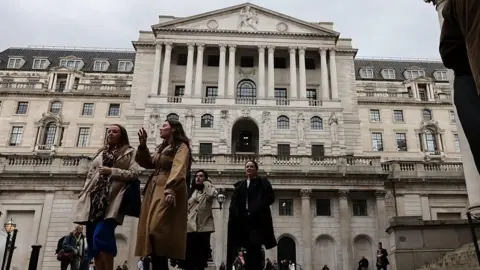The economic landscape of the UK has recently been marked by increasing complexity, particularly regarding inflation and its impact on monetary policy. Faisal Islam, the Economics Editor, explores these dynamics in a detailed analysis, noting how the unexpected turn of inflation rates complicates the anticipated interest rate decision by the Bank of England scheduled for next month.
Despite the strong start to the year, recent financial reports depict a less favorable scenario where the economy has shown signs of slowing. Specifically, just this past Wednesday, markets witnessed yet another unexpected downturn. The latest figures reveal that inflation has accelerated at a pace that was not anticipated, raising concerns about its persistence. Projections suggest that inflation is poised to remain significantly above the Bank of England’s established target of 2% until at least autumn. This prolonged period of high inflation is particularly taxing for consumers, many of whom are still grappling with the ramifications of a prolonged period marked by elevated prices and a recent resurgence in food costs.
The situation is further complicated as the heightened inflation figures present challenges to the Bank’s plans for interest rate reductions. For some time, investors had largely settled on the notion that a rate cut from the current 4.25% was highly likely to occur in August. However, with inflation taking an upward trajectory, there is a noticeable sense of caution among financial stakeholders. A prominent figure in the realm of economic advisory, Andrew Sentance—who previously served as a rate setter at the Bank of England—has publicly opined that it would be “irresponsible” to proceed with interest rate cuts in light of the current inflationary context.
Yet, anticipation persists for not only a rate cut next month but potentially another reduction later in the fiscal year. Such decisions will require the Bank of England to justify its actions clearly, especially as it continues to navigate the tensions posed by rising inflation. A key part of this narrative involves addressing concerns about whether the UK is, in fact, more susceptible to inflationary pressures than its international counterparts. Factors contributing to this potential vulnerability include rising wage demands and tax costs which are typically passed on to consumers through increased prices.
Moreover, the state of the job market adds another layer to the discussion. The anticipation of fresh employment figures will be pivotal in defining the context for a potential interest rate cut. Analysts speculate that a continued decrease in job vacancies could strengthen the rationale for rate reductions. For instance, Bloomberg’s predictions highlight a rise in the unemployment rate to 4.9%, a noticeable increase from the 4.6% documented the previous month. This presents a contrasting picture to that of other major economies, where inflation rates are not reflecting such pressures; for instance, the eurozone’s current inflation stands at a mere 2%.
Nevertheless, it is crucial to keep the broader economic outlook in perspective. Although growth is certainly showing signs of deceleration, the economy is not officially in recession. Moreover, recent data suggests a potential recovery in specific sectors, further complicating the narrative around interest rates and inflation.
In summary, the interplay between inflation and interest rate decisions in the UK is fraught with uncertainty. While there is a consensus around the necessity of addressing inflation, the economic implications of any policy shifts will require careful navigation. Stakeholders are left waiting, with eyes on the Bank of England, as upcoming employment figures and prevailing economic conditions are anticipated to play a decisive role in shaping the monetary policy landscape in the forthcoming months.











